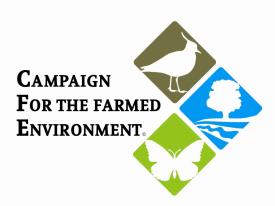 Name: Andrew Lingham, Court Farm
Name: Andrew Lingham, Court Farm
Region: Kent
Farm: Arable and grassland
Size: 364 ha
Background
240 ha of spring and winter arable crops (wheat, rape, beans, linseed, sunflowers and cover crops), grassland supporting Sussex cattle. Farm based butchery and shop. Chalk and clay with flints soils. No till crop establishment and cattle outwintered. Management of Plantlife Ranscombe Farm Reserve supporting populations of rare arable flora. One field is SSSI.
What environmental management do you already undertake on your farm?
Some Voluntary Measures (see below). Extensive ELS/HLS scheme run with Plantlife with the Reserve grassland rotationally grazed and annually cultivated margins and plots supporting species such as rough and prickly poppy, narrow fruited cornsalad, broadleaved cudweed. ELS management of hedges and wood edges, field margins, low input grassland and some wild bird seed mix. Monitoring of the farm shows high numbers of ground beetles (compared with min till or conventional systems) and good bee populations.
How will you be/are you taking part in the Campaign?
Three parcels are in Voluntary Measures (grass strips alongside woods, topped annually) and outside Stewardship cover crops contribute to good soil management and fertility. Metaldehyde has been dropped for slug control in favour of ferric phosphate. The ELS/HLS options cover some key CFE targets (the farm is nationally important for cultivated margins) and there is fertiliser free permanent pasture. Key options should be renewed into a Countryside Stewardship Higher Tier in 2018, and there is scope to maintain others not in the new scheme as VMs.
Will you be using an adviser?
Richard Moyse Ranscombe Project Officer for Plantlife, BASE no till group in Kent and Kent Wildlife Trust.
What are the benefits of taking part in the Campaign?
As much as the active ‘stewardship’ of the land, the environmental benefit on the farm is a by-product of the approach to soils, cultivations and livestock management as it moves further towards getting soil biology to work better for crops and reducing inputs, including energy use and feedstocks other than grass. All these actions contribute to CFE aims such as maintaining valued habitats and populations of scarce species, while creating a balanced and resilient farm system able to stand eg the effects of climate change and increasing regulation of the industry.
How does undertaking voluntary management fit in with your farming business?
Voluntary input on the farm takes many forms not just land use – links with the wider community are important and involve volunteer groups as well as bodies such as Plantlife and Kent Wildlife Trust. The farm system has adapted to maintain areas for rare arable wildflowers while the cropping and rotation needed to achieve this helps with management issues such as blackgrass control.
What is driving you to take part in the Campaign?
Agreement with what CFE is trying to achieve across a wide range of environmental issues especially better soil awareness and management, reduced carbon footprint. For example under no till diesel use on the farm has been cut by 30%.